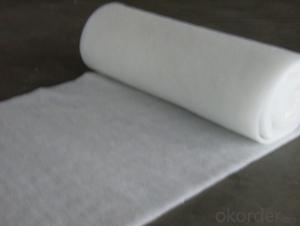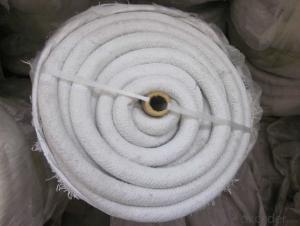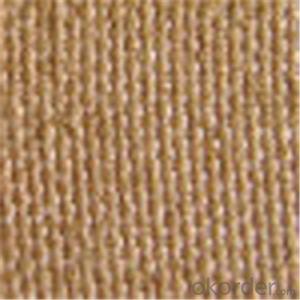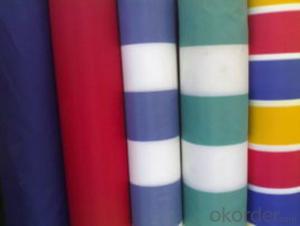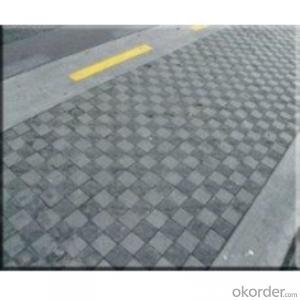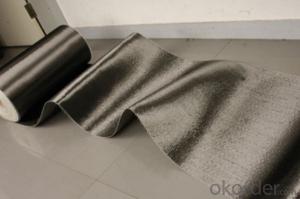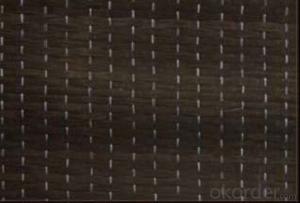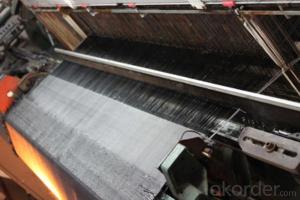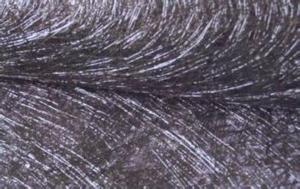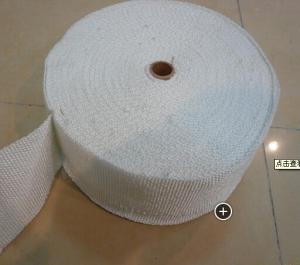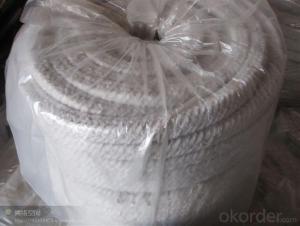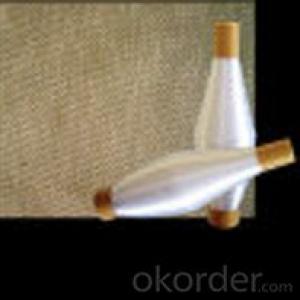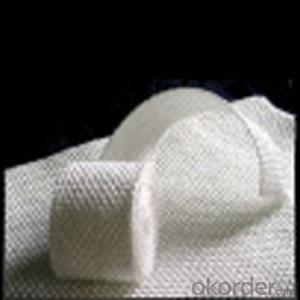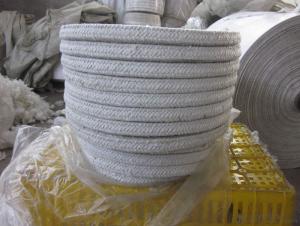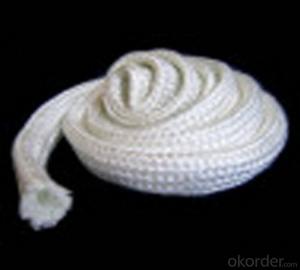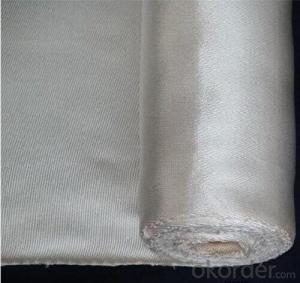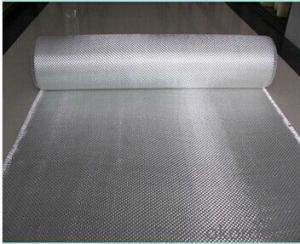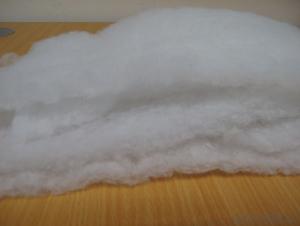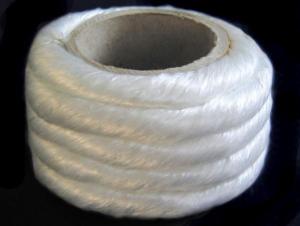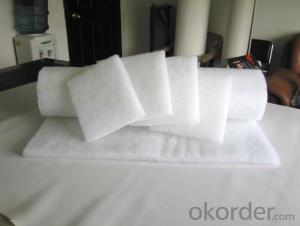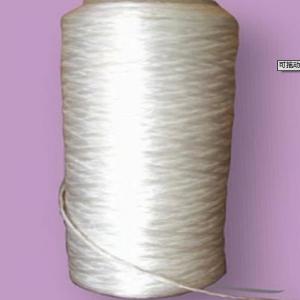Glass Fiber Textiles Refractory Heat Resistant Fiber Fabric
- Loading Port:
- Shanghai
- Payment Terms:
- TT OR LC
- Min Order Qty:
- 1 m.t.
- Supply Capability:
- 111 m.t./month
OKorder Service Pledge
OKorder Financial Service
You Might Also Like
Specifications
1.Refractory heat resistant fiber fabric
2.Heat insulation
3.white
4.High strength
5.MSDS, ISO9001-2008
Refractory Heat Resistant Fiber Fabric
It is a woven fabric made of our high quality ceramic fiber yarns. It can be used for high temperature applications up to1000° C. The cloth is reinforced with fiberglass filament, and optional stainless steel wire. It contains a certain amount of binder material which is normally burned at lower temperature and does not affect the insulation property.
Features of heat resistant fibe fabric
1.Good handling strength
2.Low thermal conductivity and heat storage
3.Excellent thermal shock resistance
4.Easy machining
5.Low weight,eastic, flexible
6.Excellent hydrophobic property
7.Smooth surface and anti-tearing
- Q: Can glass fiber textiles be used for reinforcement purposes?
- Yes, glass fiber textiles can be used for reinforcement purposes.
- Q: What is the difference between clothing material, chemical fiber and fiber?
- Combustion is one of the simple and common methods for identifying fibers. It uses different fiber combustion characteristics to identify fiber types. But only for pure textiles and woven fabrics. It is not suitable for blended new products, core spun yarn products and fire proofing products.Cotton: rapidly burning in flames, emitting white smoke;Flax: burning rapidly in the flames, emitting white smoke;Hair: gradually burning, with hair flavor, burning crisp black ash;Polyester: first fused, then fired, with a glass black brown hard sphere;Viscose: low strength, hard to harden after launching.
- Q: Can glass fiber textiles be used in window blinds?
- Yes, glass fiber textiles can be used in window blinds. Glass fiber textiles are known for their durability and strength, making them an ideal material for window blinds. They are resistant to moisture, corrosion, and UV rays, which makes them suitable for both indoor and outdoor use. Additionally, glass fiber textiles have excellent light-blocking properties, providing effective sun protection and privacy. They are also easy to clean and maintain, making them a practical choice for window blinds.
- Q: Can glass fiber textiles be used in reinforcement of natural yarns?
- Indeed, the reinforcement of natural yarns can be achieved through the utilization of glass fiber textiles. Renowned for their exceptional strength and long-lasting nature, glass fiber textiles serve as an exceptional option for augmenting the characteristics of natural yarns. By integrating glass fiber textiles into the composition of natural yarns, the resulting composite material can exhibit enhanced tensile strength, resistance to tearing, and overall sturdiness. This amalgamation of natural and synthetic fibers proves particularly advantageous in scenarios where a harmonious blend of natural beauty and heightened performance is sought-after, such as the manufacturing of textiles intended for outdoor or high-stress environments.
- Q: How is glass fiber woven into fabrics?
- Weaving is the technique used to incorporate glass fiber into textiles. It involves intertwining two sets of yarns, known as warp and weft, to form a fabric. In the case of glass fiber, the warp yarns are composed of bundles of glass filaments, while the weft yarns are also made of glass filaments. To initiate the process, molten glass is extruded through tiny openings, resulting in long continuous strands of glass filaments. These strands are then gathered into bundles called rovings, which consist of numerous individual filaments, usually ranging from hundreds to thousands. During the weaving process, the warp yarns are stretched out in parallel on a weaving loom. The weft yarns are inserted perpendicularly to the warp yarns, one at a time, using a shuttle or other weaving tool. The weft yarns are interlaced over and under the warp yarns following a specific weave structure, creating the desired fabric design. As the weaving progresses, the weft yarns interlace with the warp yarns, forming a stable and cohesive fabric. The tension of the warp yarns helps to secure the glass fibers in place, ensuring their even distribution throughout the fabric. After the weaving process is completed, the glass fiber fabric may undergo additional treatments, such as heat setting, to enhance its stability and dimensional stability. These treatments guarantee that the fabric maintains its shape and properties even when exposed to various conditions, including heat or moisture. Overall, weaving glass fiber into fabrics requires skillfully interlacing bundles of glass filaments in a specific pattern to produce a robust, long-lasting, and adaptable material suitable for a wide range of applications, including industrial textiles, reinforcement materials, and composites.
- Q: How do glass fiber textiles affect the dimensional stability of fabrics?
- Fabrics can experience improved dimensional stability with the use of glass fiber textiles. By adding glass fibers to fabrics, their overall strength and rigidity are enhanced, resulting in increased resistance to stretching and shrinking. The inclusion of glass fibers helps fabrics maintain their shape and structure over time, preventing distortion or warping. This is particularly advantageous in applications where dimensional stability is crucial, such as upholstery, automotive interiors, and technical textiles. Moreover, glass fiber textiles offer exceptional resistance to heat, moisture, and chemicals, further reducing the likelihood of deformation or shrinkage under harsh conditions. Overall, incorporating glass fiber textiles into fabric structures can greatly enhance their dimensional stability, ensuring durability and reliable performance.
- Q: How does glass fiber textile perform in terms of stain resistance?
- Glass fiber textile is renowned for its superior ability to repel stains. The inherent properties of glass fibers impart exceptional resistance against common stains like oil, grease, and dirt. Unlike natural fibers like cotton or wool, which have a tendency to absorb liquids and stains, glass fibers remain non-absorbent, rendering them effortlessly cleanable and maintainable. Additionally, the sleek and impermeable surface of glass fibers acts as a barrier, preventing stains from deeply permeating the fabric. As a result, the removal process is swift and uncomplicated. This characteristic of stain resistance has propelled glass fiber textile to become a favored choice in environments where cleanliness and hygiene hold paramount importance, such as healthcare facilities, food processing industries, and outdoor furniture.
- Q: Who has a Chinese English translation about glass fiber?. About WORD3 pages will do
- Glass is a substance known for its brittleness. Interestingly, once the glass is heated after being drawn into a much thinner than a human hair fiber glass, it seems completely forget their own nature, be like synthetic fiber as soft and tough, even more than the stainless steel wire of the same thickness!So, what's the use of glass fiber?
- Q: What are the different bonding methods for glass fiber textile?
- Glass fiber textile can be bonded using various methods, each offering unique benefits and applications. 1. Adhesive bonding: In this approach, a specific adhesive is applied to the fabric and then cured to create a robust bond. Adhesive bonding is commonly employed in industries requiring flexibility and strength, such as sports equipment or automotive part manufacturing. 2. Heat bonding: Also known as thermal bonding, this method involves melting the fibers together using heat, resulting in a solid bond. Heat bonding is often used to join multiple layers of glass fiber fabric, creating a thicker and stronger material. It finds extensive use in the production of laminated glass fiber composites. 3. Stitch bonding: This technique employs stitching or sewing to bond the glass fibers. A needle and thread are used to sew the fibers together, creating a durable and sturdy bond. Stitch bonding is frequently utilized in applications where flexibility and breathability are essential, like clothing or upholstery manufacturing. 4. Weaving: This method interlaces the glass fibers, forming a fabric. The fibers are woven using a loom, crossing over and under each other to create a stable structure. Weaving is commonly employed in producing glass fiber textiles like fiberglass cloth or fiberglass tape. 5. Knitting: This technique involves interlocking loops of glass fibers to create a fabric. Knitting machines or hand knitting needles are used to form the loops, which are then secured together to produce a cohesive material. Knitting is often preferred for glass fiber garments or accessories due to its stretchiness and comfort. In summary, the bonding method chosen for glass fiber textiles depends on the specific requirements of the application, such as strength, flexibility, or breathability. Each method has its own advantages and limitations, and manufacturers select the most suitable approach based on the desired properties of the final product.
- Q: What are the different weaving patterns used for glass fiber textile?
- Glass fiber textiles commonly utilize various weaving patterns, each possessing its own distinctive traits and purposes. Examples of prevalent weaving patterns for glass fiber textiles encompass plain weave, twill weave, satin weave, leno weave, and basket weave. 1. Plain weave: This weaving pattern stands as the most elementary and frequently employed. It involves interweaving the warp and weft yarns in an over-under manner, producing a well-balanced and robust fabric. Plain weave glass fiber textiles commonly serve in applications necessitating strength and durability, such as reinforcement materials in composites. 2. Twill weave: Distinguished by a diagonal line or rib effect on the fabric's surface, twill weave glass fiber textiles boast exceptional drapability, rendering them apt for clothing, upholstery, and reinforcement in curved composite structures. 3. Satin weave: The interlacing of yarns in satin weave glass fiber textiles yields a smooth and lustrous surface. This type of weaving pattern engenders long floats on the fabric's surface, resulting in a supple and flexible material. Satin weave glass fiber textiles find widespread use in high-end applications, including luxury apparel, automotive interiors, and decorative fabrics. 4. Leno weave: Leno weave displays a distinctive pattern wherein two warp yarns are crossed over one another and subsequently interlaced with the weft yarn. This creates a stable and open fabric structure, commonly employed in applications necessitating good ventilation and transparency, such as filters, mosquito nets, and curtains. 5. Basket weave: In basket weave, two or more warp yarns are woven together as a unit, with the weft yarns interlacing between these pairs. This results in a fabric bearing a recognizable checkerboard-like appearance. Basket weave glass fiber textiles find common usage in applications requiring a balance between strength and flexibility, such as bags, upholstery, and reinforcement in composite structures. These distinct weaving patterns offer an assortment of properties and characteristics, rendering each suitable for various applications. The selection of a weaving pattern for glass fiber textiles depends on factors such as desired strength, flexibility, drapability, transparency, and surface appearance.
Send your message to us
Glass Fiber Textiles Refractory Heat Resistant Fiber Fabric
- Loading Port:
- Shanghai
- Payment Terms:
- TT OR LC
- Min Order Qty:
- 1 m.t.
- Supply Capability:
- 111 m.t./month
OKorder Service Pledge
OKorder Financial Service
Similar products
Hot products
Hot Searches
Related keywords
